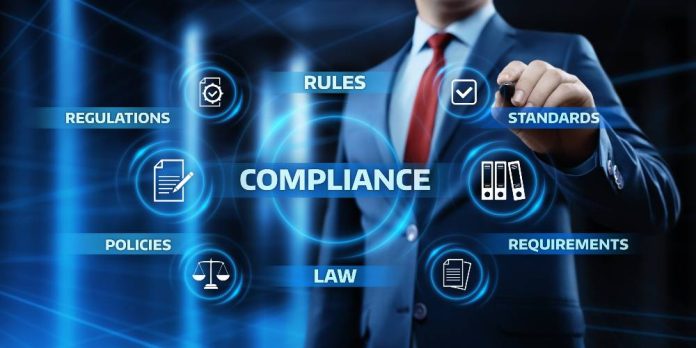As gambling expansion rapidly proliferates across the United States, the excitement is palpable. With that excitement though, comes an increasingly complex challenge for operators and suppliers when it comes to maintaining compliance.
Companies need to track as many as 100,000 requirements, parse out which 2,000 or 3,000 impact them, implement procedures around those requirements, and create a system that both maintains requirements and proactively readies for future changes.
In other words, companies have a mountain of regulatory paperwork these days. Really though, compliance is happening less on paper and technology is playing an important role as companies scale across jurisdictions. In addition to just saving the trees, they are saving the industry massive amounts of time as well.
A group of experts convened to discuss these challenges as part of the SBC webinar Preparing for the New Age in Gambling Compliance, presented earlier this month.
The panel, which can be viewed here, consisted of:
- CEO and Co-Founder of Regology Mukund Goenka
- PlayDigital VP of Compliance Steve Kastner
- Ohio Casino Control Commission (OCCC) Chief Technology and Gaming Officer Chris Fleenor
Over the course of the conversation, the group covered a wide range of topics including everything from cybersecurity to the role of testing labs between regulators and licensees. What dominated the discussion though was how the fast pace of legalization to launch as well as the rapidly expanding opportunities in US have regulators and operators alike thinking about how to streamline things. Compliance solutions are not one-size-fits-all, particularly when states are all taking different regulatory approaches, so what should stakeholders be considering as they try to scale?
Finding gambling expertise early is crucial
Regulators are facing their own challenges, especially as they quickly react to new gambling verticals falling under their purview. Ohio is just one case where institutional knowledge about these verticals is vitally important.
“As states are becoming more comfortable with the different forms of gambling and gaming that are out there. As those new forms come about, the scope of what needs to be regulated and how it’s regulated I think is ever-changing. It’s definitely a challenge for regulators to not only build the expertise around all this up-and-coming technology and gaming formats, but also to just fully understand the regulatory scope of what needs to be regulated in those markets,” Fleenor said.
“It’s really difficult for a regulator to write regulations if they don’t have the expertise in-house to know what the regulations need to cover. One of the other challenges is just getting industry feedback. So, creating those relationships with industry stakeholders and getting their feedback on what their views on the industry are and what they view as the riskiest parts that need to be regulated, that need that oversight from that third party, such as the regulatory agency.”
Licensees can start preparing for compliance before regulations are final
These conversations are not purely beneficial to the regulator either. Open lines of communication between licensees and regulatory bodies can ensure both useful and thought-out regulations and can also help start the process ahead of the game, sometimes even before a gambling expansion bill becomes law.
“We’ve spent a lot of time and effort in building those relationships with regulators in our land-based business. And so as these new frontiers opened up in existing jurisdictions, it does enable us to tap into those relationships and have a path that we can rely on and build forward,” Kastner said, echoing Fleenor. “When we’re entering a new jurisdiction, we definitely recognize that the timelines for regulators are severely abbreviated.”
“We generally keep tabs on the legislation as it’s being formed and looking to see what might be shaping up. Depending on the receptiveness of the jurisdiction, we may reach out and have an early dialogue with the regulator too, especially if we know them, to understand what’s going on and where their minds might be going,” he added.
The growth compliance paradox
Finding times for these conversations can be tough, especially as licensees are juggling entering multiple new states while also maintaining compliance in jurisdictions. Goenka summed up the problem rather well with what he called the “growth compliance paradox”:
“As a company grows and looks to enter new markets, its operations and compliance responsibility increase. But businesses often delay their investments and thereby push out their responsibility, causing a downstream logjam. The real hard work really starts after the regulations come into play.”
“So if it feels like you’re running against the headwind with a parachute pulling you back, you’re sitting in that growth compliance paradox within a given company and that leads to compliance debt that really needs to be paid back at some point, either in the form of enforcement actions, operational bottlenecks or other discussions with regulators,” he added.
All parties agree there are so many requirements, too many for human compliance teams to handle without the help of technology like Regology.
Regulators like OCCC moving toward segmentation
For Ohio, that desire to streamline was at the heart of how they set up sports betting expansion.
“What we decided early on was to use as much technology as we could to make to make this as efficient as possible for us,” Fleenor explained. Unlike some states with a small number of operator licensees, Ohio’s expansive sports betting plan not only meant dozens of license applications to process but several companies new to the space, including grocery stores seeking sports betting kiosks. With these new operators, the regulators felt the key to processing this information was segmentation.
“For sports gaming, Ohio implemented a new online compliance system that we built in-house to have all of that documentation submitted and approved electronically and more piecemeal,” he added. “And one of the challenges that we’ve had so far is that we have a lot of operators who are in other jurisdictions who think that, hey, this is not how we do it everywhere else, can we just do it that way?'”
To Goenka’s point about the compliance paradox, what Ohio is asking licensees to do now may seem burdensome, but it helps avoid a logjam down the line. Fleenor used the example of taking a 200-page document, where any change requires a complete re-vetting of the entire document. This is an onerous process, but with OCCC’s segmentation, that change turns into something that only needs five pages reviewed instead of a novel’s worth of words.
Finding the balance of automation and human reactions in compliance
With bespoke requirements at the state level, the need to cut down on the amount of manual components in a compliance team is even more important. Goenka said this process of automation really breaks down into two steps. First, it is about gathering and organizing all of the licensing and regulatory documents a company needs. Then, it is about finding what is better done by hand and what can be left to automation. It is also about getting the crucial buy-in of the C-suite that this is a necessary step to save both time and money in avoiding fines along the way.
“You wouldn’t sit with a paper and pencil to balance your checkbooks anymore, you also at the same time wouldn’t sit with manual processes to review 100,000 requirements to identify the ones that are specifically relevant for you,” Goenka said. “You would leverage a system to identify the published controls and map them to your internal controls. You would identify the emerging risks through enforcement actions that are coming, hopefully not as much out of Crisis Team, and others. And you’d want to build out the right kinds of compliance reports to make the argument to the board of directors that you shouldn’t fall into that growth compliance paradox that I mentioned earlier.”
Goenka noted there may not be an argument for automation. He suggested a benchmark of 10x efficiency, otherwise the efforts to put these tools into place may not be worth it. However, in the case it does merit it, for groups like PlayDigital, the transformation can be substantial:
“I’ve been in compliance teams now for a long time and I think that we do far more today with far fewer human resources than we did 15, 20 years ago,” Kastner observed. These efficiencies are the result of not just implying tools, but finding the right tools, which can be a process itself.
“We frequently try to go out and look for a tool that works in another industry and try to adapt it to our own needs. An example of that is there’s a product that probably most of the companies on this call use called JIRA from Atlassian, and it’s a case tracking tool. We’ve figured out how to adapt that to control such things as product submissions and faults in the field and doing release timing and authorization and those types of things.”














